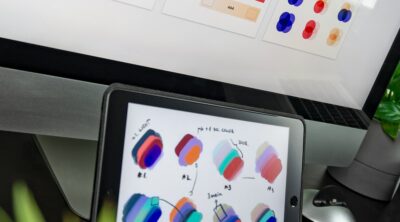< Back to all posts
Why B-Roll Footage is So Important
So your company is producing an in-house video you plan to use to highlight a major product or service you provide. You have everything planned out for a grade A explainer-style video: a great script, an experienced voice actor, and the right stage setup for a single camera shoot. Only to realize later on your production failed to plan for b-roll footage.
You can have the best script, with a famous face in beautiful scenery, but a finished video comprised of the same shot will quickly lose an audience. But what exactly makes b-roll footage so important, and how does it improve almost any video? This blog will cover some of the basics of b-roll footage and how your brand can produce better video content by capturing b-roll footage.

What is B-Roll Footage?
It’s kind of hard to properly portray the value of b-roll footage without first providing more background explanation of what exactly b-roll footage is. B-roll is any “extra” footage that’s used as alternative or supplemental to the main footage. At one time, main footage was referred to as “A-footage,” hence where we get the name b-roll for the secondary footage.
B-Roll Footage Today
In modern filmmaking, b-roll footage is often still used to hide any errors in the main footage. For example, in the single camera scenario, b-roll might be used to cover a jump cut to edit out unnecessary filler dialogue like “uh” or “like.”
It’s also great for any live productions, or to cut to another camera angle, including news production. B-roll helps fill in the blanks of any “dead air” and gives your team something to show in between the action.
However, b-roll is often used as a means to enhance films through strong visual examples, exciting action shots, or cutaway establishing shots. It’s important to note that b-roll is usually shot without audio, and any audio from the main cut (like a voiceover), continues to play overtop of the secondary footage.
Why Is B-Roll Footage Important?
B-roll footage is important to any video production. It adds necessary dimension and depth to your storytelling, helps cover potential errors, illustrates and demonstrates action that’s otherwise unexplained, and will keep your audience actively engaged throughout a viewing.
You can approach b-roll footage in almost any way, with almost any subject, including:
- Longshots establishing scenery
- Closeups of people, or even still images with some camera motion (like in a historical documentary)
- Key physical action, like a demonstration
–Powerful, exciting animation can be used in the right context
Think back to the single-camera explainer video example. Let’s say it’s a corporate training video. Will the video serve its purpose through words alone? Likely the answer is no. Which leads to the many ways b-roll improves every video.
How Does B-Roll Footage Improve Videos?
A training video that’s shot with a single-camera, with a single speaker, about a single subject would get boring pretty quickly. But with b-roll, you have the opportunity to add new layers of storytelling to effectively communicate a message.
So now instead of a simple explanation in a training video scenario, your video offers much more. A physical example will always be more valuable than words.
Great scripted dialogue is very important, but what’s one of the number one rules of writing? Show, don’t tell. And with b-roll footage, your video can accomplish just that. Show the action being described or explained.
Some additional examples of how to utilize b-roll footage include:
- Establishing specific locations
- Cutting to individuals or subjects (not just actions) as they’re being discussed
- Showing multiple angles of the same subject
- Illustrating contrasts between subjects
- Telling a story with a collection of b-roll and voice over only (like many commercials)
The options are really endless and are only limited by the creativity of a given production team. Through b-roll, you’re not just keeping your audience engaged with exciting action or change of pace but illustrating exactly what you deem to be important or worthy of more attention.
How Much B-Roll Do You Need?
It’s difficult to judge exactly how much b-roll footage you’ll need. Largely it will depend on the size and scope of your project. But even then, there’s no clear-cut formula or general rule of thumb to go by.
In general, it’s better to have more b-roll than you think you need. Plus, any b-roll you shoot isn’t limited to a single project. Once you begin shooting and stockpiling unused b-roll, you’ll have a database stored up for later use. You never know when you might need it.
The Wrap Up
Like other aspects of video production, shooting great b-roll is a skill that can take years to develop. But you should always go into any project with a plan. B-roll should never be an afterthought. Take the time to account for what kinds of footage you’ll want to shoot during the storyboarding and pre-production phase.
Again, don’t be afraid to overshoot b-roll. There’s really no such thing as too much. Your creative team will improve with each project and you’ll have an array of b-roll footage at your disposal moving forward.
And if you already have your master video project vision in mind, but need the best crew to help execute it, get in touch with us at Crews Control. No matter where you’re shooting, we’ll connect you with the best local crews and help you execute your next video project every step of the way. And getting great b-roll footage always comes with the territory. Get your free quote today!







Leave a Reply